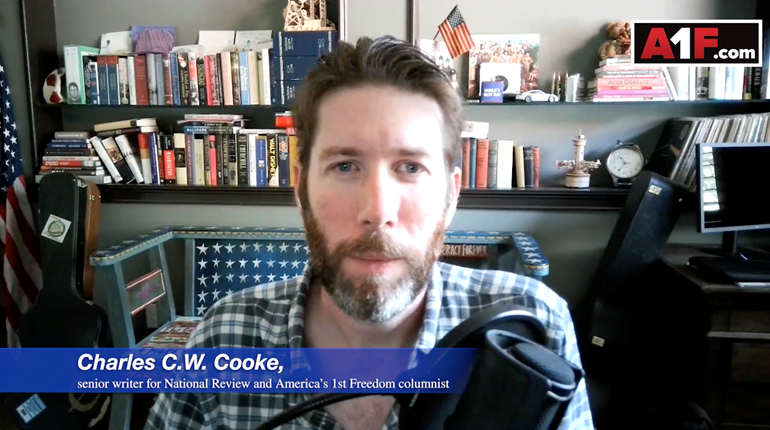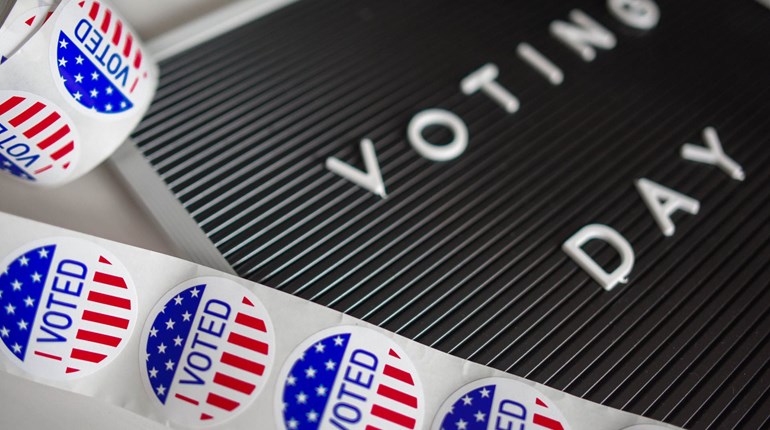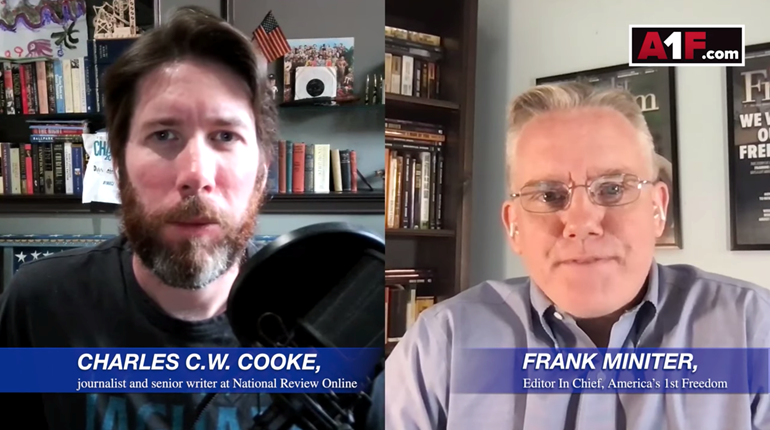
There comes a point during every American gun-control debate at which the side calling for draconian restrictions gives up on arguing the specifics or proposing detailed legislative change and rushes stupidly to deceit. Often, this rush involves the frustrated and farcical insistence that the U.S. Constitution does not, in fact, protect an individual right to bear arms.
On other occasions, it involves the attempt to destroy the reputation of the Second Amendment by granting that, while the provision may protect the private ownership of guns in some form, it was nevertheless designed for ugly or base reasons, and that it is therefore tainted.
“Americans, the record clearly shows, have always enjoyed the right to own guns for their defense.”
In both cases, the intention is the same: To short-circuit a debate that they know cannot be won. By removing from the discussion one of the core checks upon which the American political system relies, opponents of the right to keep and bear arms hope to demote it from a cherished part of the much-admired Bill of Rights to an embarrassing vestige of an age long gone, and, thereby, to cast it as a mistake that should be rectified as soon as is politically possible.
This tendency is a destructive one, in part because it is a sin to lie about history in order to advance contemporary political goals. It is also destructive because it has the effect of funneling all of our historical attention onto 27 words in the federal Constitution. This, in turn, permits the integrity of one of our core liberties to be rendered contingent upon our opponent’s willingness to accurately read a single sentence of law.
It was, of course, entirely obvious to the men who wrote the federal Second Amendment that its purpose was to protect the individual’s right to keep and bear arms. It was obvious, too, to the commentators who explained it, to the jurists who interpreted it and to the citizenry that ratified it. Nevertheless, contrary to the implications of the “but actually” brigade, it is simply not the case that the Second Amendment has served as the sole, or even the primary, protection of that right throughout American history—or, indeed, that it is the sole means by which the right is legally affirmed.
There are also ubiquitous equivalents at the state level—equivalents that are both numerous and robust. Should they wish to fight back against the straight-to-the-root tactics that are gaining currency and favor, advocates of gun rights must broaden the shoulders of the giants on which they stand and make it clear that they, not their opponents, enjoy the slam-dunk historical case.

That case is strong. If the Second Amendment is either irrelevant to the question of the private ownership of arms because it pertains only to federal authority over the militias, or because it is irrevocably stained by Founding-era motivations such as slavery, then one would not expect to see 44 out of 50 states with their own provisions; one would not expect to see pre-Second Amendment state-level provisions that explicitly mention an individual right; one would not expect to discover that non-slave states adopted the right more enthusiastically than slave states; and one would certainly not expect to see states in the mid-to-late 20th century willingly adding their own Second Amendment equivalents into their constitutions. (Why would any state, let alone nearly all of them, have enthusiastically echoed a historical accident?)
That we can, in fact, see all of these things should show us just how deeply unserious is the idea that the contemporary understanding of the Second Amendment is a hoax. Americans, the record clearly shows, have always enjoyed the right to own guns for their defense. And, crucially, they would have done so nearly everywhere had the federal Constitution never been written.
The first post-Declaration protection of the right to keep and bear arms was introduced into the Constitution of Pennsylvania in 1776, a full 15 years before the ratification of the Bill of Rights. It contains explicitly individual language holding “that the people have a right to bear arms for the defence of themselves and the state; and as standing armies in the time of peace are dangerous to liberty, they ought not to be kept up; And that the military should be kept under strict subordination to, and governed by, the civil power.”
One year later, the wording of Pennsylvania’s provision was copied verbatim by Vermont into the same Constitution with which the state abolished slavery within its borders. If, as Professor Carl Bogus and others have disingenuously suggested, the entrenchment of gun rights in America was the product of a widespread desire to put down slave rebellions, one would not expect to see a free state serving as a trailblazer, nor to see that state’s language being copied literatim into a document of renewal and manumission.
This chronology alone should be sufficient to render as abject folly the oft-repeated suggestion made by Connecticut’s Senator Chris Murphy that the Founding generation did not conceive of gun ownership as anything other than a collective endeavor. But when one considers that Murphy’s own state, too, has, since 1818, boasted a Constitutional provision recognizing that “every citizen has a right to bear arms in defense of himself and the state,” his approach begins to look somewhat sinister. If, as Murphy suggests, the Founders did not intend anyone but the members of militias to keep and bear arms, they had a pretty funny way of showing it.
Equally inconvenient to the “ancient vestige” theory is that the states have seen fit to add their own protections during all periods of American history—and that, in almost every case, they have made sure to include a clear-cut reference to the rights of the individual. Even when they have not, with the exception of Massachusetts, their courts have.
As a matter of fact, ensuring that the right to keep and bear arms was constitutionally protected was often one of the first orders of business for newly admitted states. If, as a host of gun-control activists now claim, the Second Amendment shows that the right was historically understood to apply only to the members of militias, how should we interpret the language adopted by the vast majority of states after the Second Amendment was approved?

In 1792, Kentucky included in its inaugural Constitution: “That the right of the citizens to bear arms in defense of themselves and the State shall not be questioned.”
In 1802, Ohio declared: “That the people have a right to bear arms for the defense of themselves and the State.”
In 1816, Indiana ensured that “The people shall have a right to bear arms, for the defense of themselves and the State.”
In 1817, Mississippi entrenched that “Every citizen has a right to bear arms, in defense of himself and the State.”
In 1819, Alabama recognized “That every citizen has a right to bear arms in defense of himself and the state.”
In 1820, Missouri affirmed that “[the] right to bear arms in defense of themselves and of the State cannot be questioned.”
In 1835, Michigan confirmed that “Every person has a right to bear arms for the defense of himself and the State.”
In 1836, Texas maintained that “Every citizen shall have the right to bear arms in defense of himself and the republic.” And so on, and so forth. Were they mistaken?
In 1889, Wyoming declared: “The right of citizens to bear arms in defense of themselves and of the state shall not be denied.”
In 1896, Utah certified that “The individual right of the people to keep and bear arms for security and defense of self, family, others, property, or the state, as well as for other lawful purposes shall not be infringed; but nothing herein shall prevent the legislature from defining the lawful use of arms.”
In 1912, Arizona guaranteed that “The right of the individual citizen to bear arms in defense of himself or the State shall not be impaired.”
Both Alaska and Hawaii copied the Second Amendment verbatim into their constitutions upon joining the Union in 1959. Nevada, Delaware, New Hampshire and West Virginia all realized in the 1980s that they had no explicit protections within their state charters and set about remedying that oversight.
If this is really only a right for state militias, then we are looking here at one of the great mass delusions in American history—a delusion that affected lawmakers, constitution-drafters and judges alike, and that, astonishingly, both predated and followed the ratification of the sentence that allegedly caused all the confusion.
To put it simply, there has been no point in American history in which the states have not moved to protect the individual right to bear arms. They did so before the Constitution was written. They did so immediately after the Constitution was written. They did so before the Civil War. They did so after the Civil War. They did so in the North and in the South and in the Midwest and in the West. They did so in the 19th century, and in the 20th century and have continued to do so as recently as 1998 (Wisconsin). In all of American history, only six states—California, New York, New Jersey, Iowa, Maryland and Minnesota—have declined to echo or improve upon the Second Amendment in their state constitutions. Isn’t it more likely that it is they, not the rest, that represent the exception?
That our gun-control debates tend to be marked by ignorance and hysteria is a problem. That, increasingly, they are being soiled by grammatical sophistry and historical revisionism is a crisis. Those who wish to see their Second Amendment rights protected need to arm themselves with the historical facts, as the truth is clearly on their side.
To proceed in any other way is to be sucked into a black hole of fallacy and deceit from which there is no escape, and from which no worthwhile deliberation can emerge. To paraphrase Daniel Patrick Moynihan, we are all entitled to our own opinion, but not to our own history. That history is on our side—if we can keep it.

































